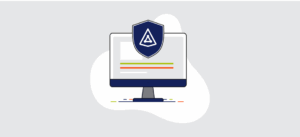For over 25 years, Active Directory (AD) has quietly held the digital keys to the kingdom — authenticating users, enforcing security policies and keeping businesses running without a hitch. It’s always been there, working behind the scenes, so reliably that most executives have never given it a second thought.
But the people who built and maintained AD — the architects who designed its forests, secured its trusts and fine-tuned every Group Policy Object (GPO) to perfection — are retiring. And they’re doing so at a time when identity security has never been more critical.
What AD admins have always done (and why it matters)
A skilled AD admin was never just a “button pusher.” They were the gatekeepers, the strategists and the protectors of your organization’s identity infrastructure. Their deep knowledge allowed them to:
Prevent misconfigurations
They ensured that GPOs, ACLs and authentication policies were correctly set and secure, stopping mistakes before they turned into significant vulnerabilities.
Validate security after changes
Every major AD update, domain trust or policy shift was closely monitored. AD admins checked for new weaknesses introduced by changing configurations, aiming to keep systems secure and compliant.
Audit and monitor privileged access
By regularly reviewing user permissions — especially for critical accounts such as Domain Admins — AD admins prevented privilege creep and unauthorized access to sensitive assets.
Manage hybrid identity and cloud integrations
They made sure on-prem AD worked securely with cloud-based deployments and Azure AD (now Entra ID), addressing compatibility, synchronization and security hurdles in an era of accelerated hybrid adoption.
Investigate security incidents and anomalies
Skilled AD admins tracked suspicious logins, lateral movement and escalation-of-privilege attempts. Because of their deep familiarity with each domain’s structure, they could often spot unusual activity faster than anyone else.
Defend against ransomware and identity attacks
By hardening AD with best practices, they reduced avenues for exploits like pass-the-hash, credential stuffing and unauthorized escalations. Their vigilance often served as the first line of defense against widespread breaches.
This expertise was built over years — sometimes decades — of continuous learning and real-world troubleshooting. Now, just as AI-powered threats are emerging, the people who best understood how to defend against them are stepping away.
A new challenge: AI-powered attacks in an AI-driven world
The timing couldn’t be worse. As AD admins retire, AI-driven attack methods are evolving at an unprecedented rate — probing for weaknesses, automating brute-force attempts and crafting hyper-personalized phishing campaigns. These advanced tactics put identity infrastructures under constant pressure, with even small oversights posing a major risk.
Meanwhile, organizations are also under pressure to modernize their identity infrastructure, moving toward zero trust and hybrid environments. Many teams are exploring or adopting containerization, microservices and multi-cloud strategies. Each of these changes potentially alters how identity is managed, from access tokens to user session handling. Without the right expertise, simply “plugging in” a new identity solution without fully understanding how it interacts with existing AD environments can create unintended security gaps.
This raises a key question:
How do you ensure your AD remains hardened against evolving threats, modernize without introducing risk and detect identity-based threats before they escalate — all without the decades of institutional knowledge that departing admins once provided?
How to prepare for the AD retirement wave
To avoid security blind spots, organizations should take action now. The following steps can help you reduce risks and ensure a smoother transition:
1. Conduct an AD security assessment
Identify current vulnerabilities: Whether you partner with a third-party security firm or use in-house scanning tools, begin by mapping out your entire AD forest, including Entra ID or cloud connected identities. Document domain trusts, existing policies and privileged access paths. Look for lingering misconfigurations, stale accounts or outdated policies — issues that seasoned admins might have mentally “worked around” for years but never formally fixed.
Highlight priorities: Once you know where critical weaknesses lie, you can develop a clear roadmap. For instance, outdated protocols like NTLM or SMBv1 need to be disabled, or Domain Admin credentials might need more robust protections. These insights let you take targeted action before an attacker exploits the cracks.
2. Document key AD processes
Preserve tribal knowledge: Have retiring admins capture their daily workflows and document all relevant processes — such as group policy changes, domain controller updates and account provisioning flows. Consider recordings or step-by-step guides that walk through typical tasks.
Centralize the information: Store all AD/Entra ID-related documentation in a shared repository or knowledge base, accessible to the broader IT team. This ensures critical expertise doesn’t disappear once key individuals leave the organization.
3. Train and upskill junior IT teams
Training: Encourage your junior staff to take training classes, explore features, ask questions and experiment in safe, lab-like environments.
Formalize mentorship: Pair senior admins (before they retire) with junior colleagues to transfer hands-on knowledge. This will allow for Q&A opportunities, and they can document problem-solving approaches in real time.
4. Plan for hybrid identity and Entra ID
Evaluate your future state: Even if you intend to maintain significant on-prem AD infrastructure, consider how cloud-based identity services such as Entra ID might integrate. Many large enterprises adopt a hybrid approach, syncing on-prem directories to cloud-based identity providers for SaaS applications.
Secure the integration: Use well-documented best practices and identity bridge solutions that ensure data is protected in transit. Validate your single sign-on (SSO) or federation strategies to prevent creating new attack surfaces.
5. Revisit and enhance security posture regularly
Schedule periodic audits: Make AD security assessments a recurring event. This routine approach can quickly identify changes over time, such as newly created service accounts, group memberships or GPOs that introduce weaknesses.
Adopt zero trust principles: Continuously validate and verify every user and device — never assume “trusted” status purely because something resides on a corporate network. This mindset helps strengthen both AD-centric security and cloud-based identity controls.
By taking these actions, organizations can mitigate the risk of losing critical AD expertise while preparing for future identity challenges. The key is not to wait until the last administrator has retired; proactive steps taken now will ensure the foundation of your identity infrastructure remains solid and secure.
AI-powered assistance
Now that we know what we need to do with what we have today, let’s talk about how solutions that leverage AI can help.
While no single tool can replace a seasoned admin’s insights, AI-driven platforms offer a practical way to ensure continuous, automated oversight of your identity ecosystem. These tools typically provide capabilities such as:
Automated configuration analysis
Advanced algorithms scan your AD environment for known misconfigurations and highlight potential security risks, helping you spot weak permissions or misapplied GPOs that attackers could exploit.
Continuous security validation
Each time a policy changes or a new configuration is deployed, AI-driven solutions can re-check the environment for vulnerabilities — alerting teams if a new setting unintentionally opens a security gap.
Real-time threat detection
By analyzing vast quantities of security signals and behavioral patterns, AI-based identity monitoring can detect anomalies that indicate an impending breach or an active privilege escalation attempt.
Intelligent change tracking
AI-assisted monitoring tools can keep a record of critical AD objects and permissions, alerting your team when unexpected modifications occur. This visibility not only helps prevent insider threats, but also supports more effective incident response.
Guided recommendations
For less experienced admins, AI engines can provide context-aware suggestions — explaining best practices for delegation models, password policies or GPO configurations, and thereby reducing the risk of human error.
Historical and forensic insights
Advanced analytics can quickly trace the origin of an issue, assess who made a change and gauge its broader impact — giving teams a faster way to investigate and contain threats.
Simplified hybrid integrations
For organizations balancing on-prem AD with cloud-based directories or applications like Entra ID, AI-based tools can help unify monitoring and alerting processes, bridging the gap between older infrastructure and modern deployments.
In a world where seasoned admins are retiring faster than teams can upskill juniors, AI steps in as a powerful force multiplier which can help your team stay ahead of evolving threats and reduce the strain on junior staff.
The future of AD security
With senior admins retiring and AI-powered attacks on the rise, organizations must rethink how they secure their identity infrastructure for the long term.
While modern AI-driven solutions can help by providing continuous monitoring, real-time threat detection and proactive recommendations; it’s ultimately the combination of sound technology, well-documented processes and a well-trained team that will keep your organization’s identity ecosystem resilient.
By actively planning for the departure of key AD experts, investing in new technologies and empowering junior administrators, you ensure that Active Directory and hybrid environments remain a safe, secure and robust platform for the future of identity security.



